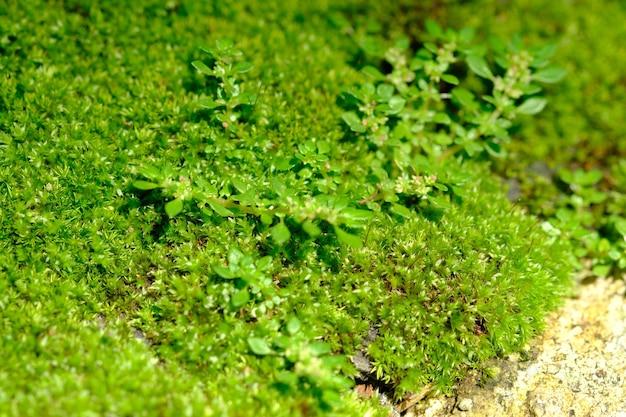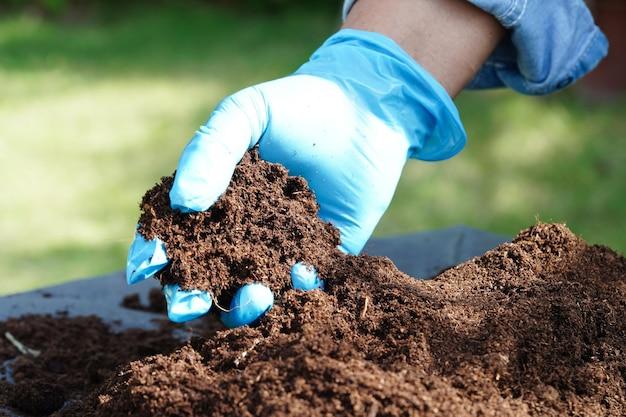Welcome to our comprehensive guide on how much lime to add to peat moss! If you’re a gardening enthusiast or a beginner looking to enhance your soil’s pH levels, this blog post is for you. We’ll cover everything you need to know about adding lime to peat moss, whether it’s for your garden beds, potted plants, or even your lawn.
In this post, we’ll answer popular questions like, “Can you add too much lime to soil?” and “Can lime burn your lawn?” We’ll also explore how to acidify soil quickly, how long it takes for lime to work in soil, and how to increase pH in soil effectively. Additionally, we’ll touch on topics such as the pH level of Premier peat moss and whether potting soil requires lime. Lastly, we’ll dive into practical tips on how to add lime to peat moss, how to raise pH in peat, and how to fix an excessive amount of peat moss in soil.
So, join us on this journey of lime and peat moss as we unlock the secrets to healthier plants and thriving gardens. Let’s get started!
How Much Lime Should You Add to Peat Moss
So, you’ve got your hands on some peat moss and you’re ready to give your plants a little boost. But hold on a second, before you go pouring that lime into your peat moss, let’s talk about how much you should actually be adding. It’s better to avoid the “more is better” mentality here, because too much lime can actually do more harm than good. Let’s find that perfect balance and keep your plants healthy and happy!
Understanding the pH Dance
Before we dive into lime quantities, let’s quickly touch on pH levels. The acidity or alkalinity of your soil is measured on a scale of 1 to 14, with 7 being neutral. Most plants prefer a slightly acidic environment, around 6.0 to 7.0 on the pH scale. Peat moss, on the other hand, tends to be naturally acidic, with a pH typically ranging from 3.0 to 4.5. That’s why we’re adding lime, to raise the pH and make it more plant-friendly.
Testing, Testing, 1, 2, 3!
Before you start adding any lime to your peat moss, it’s important to test the pH level of your soil. You can find inexpensive soil testing kits at your local garden center or opt for a more precise electronic tester if you’re feeling fancy. These tests will give you an accurate reading of your soil’s pH level, so you’ll know exactly how much lime you need to add.
Small Gardens: A Light Dusting
For small-scale gardening projects, like window boxes or individual potted plants, a light dusting of lime is all you need. Sprinkle about a tablespoon of lime per square foot of peat moss and gently mix it in. This small amount should be enough to balance the pH and keep your plants content.
Medium-Sized Gardens: A Generous Pinch
If you’ve got a medium-sized garden bed, it’s time to step up your lime game. Aim for around 5 pounds of lime per 100 square feet of peat moss. Spread it evenly across the bed and work it into the soil, ensuring a thorough mix. This will help maintain the ideal pH level for your plants and keep them thriving.
Large-Scale Gardens: The Lime Showdown
Alright, you’ve got a sprawling garden filled with verdant wonders, and you’re ready to tackle the lime challenge head-on. For larger areas, like expansive vegetable patches or flower beds, you’ll want to ramp up the lime dosage. Aim for about 25 pounds of lime per 1,000 square feet of peat moss. This may sound like a lot, but remember, you’re dealing with a larger area that requires more lime to balance the pH effectively.
Fine-Tuning: The Art of Observation
Once you’ve added the appropriate amount of lime to your peat moss, it’s time to sit back and observe. Keep an eye on your plants and monitor their growth and overall health. If you notice any signs of distress, it’s a good idea to check the pH level again and make any necessary adjustments.
Lime-Infused Success!
Congratulations, you’re now armed with the knowledge of how much lime to add to peat moss! Remember, the key here is balance. Too little lime won’t have the desired effect, while too much can lead to alkaline soil, causing nutrient deficiencies in your plants. Now go forth, sprinkle that lime, and watch your garden flourish like never before!
FAQ: How Much Lime Should You Add to Peat Moss
Peat moss is a popular additive for improving soil structure and moisture retention. However, it is naturally acidic, making it important to balance the pH levels when using peat moss in your garden. This FAQ-style guide will address common questions about adding lime to peat moss and help you understand the process of adjusting soil acidity.
Can You Add Too Much Lime to Soil
Absolutely! While lime is helpful for neutralizing acidic soil, adding too much can disrupt the pH balance and make the soil overly alkaline. It’s essential to follow recommended guidelines and perform regular soil tests to avoid over-liming.
Can Lime Burn Your Lawn
Lime isn’t likely to burn your lawn. However, applying an excessive amount in one spot can cause temporary damage. To prevent this, make sure to distribute lime evenly throughout the lawn. Watering the area after lime application will also help prevent any potential burning.
How Do You Acidify Soil Quickly
If you need to acidify your soil quickly, you can use organic materials like peat moss, coffee grounds, or pine needles. These natural additives can gradually lower the soil’s pH over time. Alternatively, you can use sulfur-based products specifically designed to acidify soil.
How Long Does It Take Lime to Work in Soil
The time it takes for lime to work in soil can vary depending on several factors, such as soil type, lime quality, and moisture levels. Typically, it can take several months for the full effects of lime application to be noticeable. However, you may observe some changes within a few weeks.
How Do You Increase pH in Soil
To increase pH levels in soil, you can add alkaline substances such as lime, wood ash, or crushed oyster shells. These materials will gradually raise the pH over time. It’s essential to follow recommended application rates and retest the soil to monitor the pH progress.
Does Potting Soil Need Lime
Potting soil often contains ingredients like peat moss, which are naturally acidic. Lime can be beneficial for balancing the pH levels. However, it’s crucial to consider the specific needs of your plants and perform a soil test before adding lime to potting soil.
How Much Lime Should You Mix with Peat Moss
The ideal amount of lime to mix with peat moss depends on the current pH levels and your desired target pH. Generally, a ratio of 1-2 tablespoons of lime per gallon of peat moss is recommended. However, it’s always best to perform a soil test and follow the lime manufacturer’s guidelines for precise measurements.
How Do You Add Lime to Potted Plants
Adding lime to potted plants is similar to other applications. Start by mixing the appropriate amount of lime with the potting soil or peat moss before planting. Ensure even distribution throughout the container. Remember to monitor the pH levels regularly and adjust if necessary.
What Is the pH of Premier Peat Moss
Premier peat moss typically has a moderately acidic pH ranging from 3.5 to 4.5. It’s a great choice for acid-loving plants, but it’s important to adjust the pH when using it with plants that prefer neutral or slightly alkaline conditions.
What Should Be Added to the Soil to Increase Its pH Value
To increase pH levels in soil, you can incorporate alkaline materials like lime, wood ash, or agricultural limestone. These substances effectively neutralize acidity and gradually raise the pH value. Regular soil testing will help you determine the necessary amounts for optimal results.
How Much Lime Should You Add to Peat
The amount of lime you should add to peat depends on the current pH levels indicated by soil testing. Generally, a ratio of 1-2 tablespoons of lime per gallon of peat is a good starting point. Remember to thoroughly mix the lime and peat moss to ensure even distribution.
How Do You Raise pH in Peat
Raising pH in peat can be done by adding alkaline materials like lime, wood ash, or crushed eggshells. Begin by mixing the chosen amendment with the peat moss thoroughly. Regular monitoring of pH levels is crucial to avoid over-liming or under-liming.
How Do You Fix Too Much Peat Moss in Soil
If you’ve added too much peat moss to your soil, you can balance it with amendments that increase the pH, such as lime or wood ash. Additionally, incorporating organic matter like compost can help restore nutrient balance and improve soil structure.
What Does Lime Do to Potting Mix
Lime performs multiple functions in potting mix. It neutralizes the acidity of ingredients like peat moss, stabilizes the pH levels, and provides plants with essential nutrients like calcium. Adding lime to potting mix ensures optimal conditions for healthy plant growth.
How Long Does It Take for Peat Moss to Acidify Soil
Peat moss alone does not acidify soil. In fact, it is naturally acidic. If you wish to acidify your soil, you may need to use alternative methods like adding sulfur-based amendments or using organic materials known for their acidic properties.
How Do You Acidify Soil with Peat Moss
As mentioned earlier, peat moss alone does not acidify soil. However, it can help maintain or slightly lower the pH levels due to its acidic nature. If you desire further acidification, consider combining peat moss with other acidic amendments or organic materials.
Will Peat Moss Raise Soil Acidity
No, peat moss will not raise soil acidity. In fact, it is naturally acidic and can slightly lower the pH levels of the soil. If you require a higher level of acidity, it is necessary to incorporate additional acidic additives along with peat moss.
How Do You Neutralize Peat Moss
To neutralize peat moss, you can use alkaline materials like lime or wood ash. Mix the chosen amendment thoroughly with the peat moss to ensure even distribution. Regular monitoring of the pH levels will help you achieve the desired neutralization.
How Do You Increase pH
To increase pH levels, adding alkaline substances like lime, wood ash, or crushed oyster shells is effective. These materials gradually raise the pH of the soil over time. However, it’s crucial to monitor the pH levels regularly and make adjustments as needed.
Can You Over-lime Your Garden
Yes, over-liming your garden can have negative effects on soil health and plant growth. It is important to follow guidelines and perform soil tests to determine the correct amount of lime to use. Over-liming can lead to soil alkalinity, nutrient imbalances, and hinder the growth of certain plants.
Can You Use Peat Moss on Your Lawn
Yes, you can use peat moss on your lawn. However, keep in mind that peat moss is acidic by nature. If your lawn requires a higher pH level, you may need to amend the peat moss with lime or other alkaline materials to maintain proper soil balance for optimal lawn health.
Now armed with this comprehensive FAQ-style information, you’re ready to confidently adjust the pH levels of your soil and make the most of peat moss in your gardening endeavors. Remember to perform regular soil tests, follow recommended guidelines, and maintain a healthy balance to ensure thriving plants and a flourishing garden. Happy gardening!

